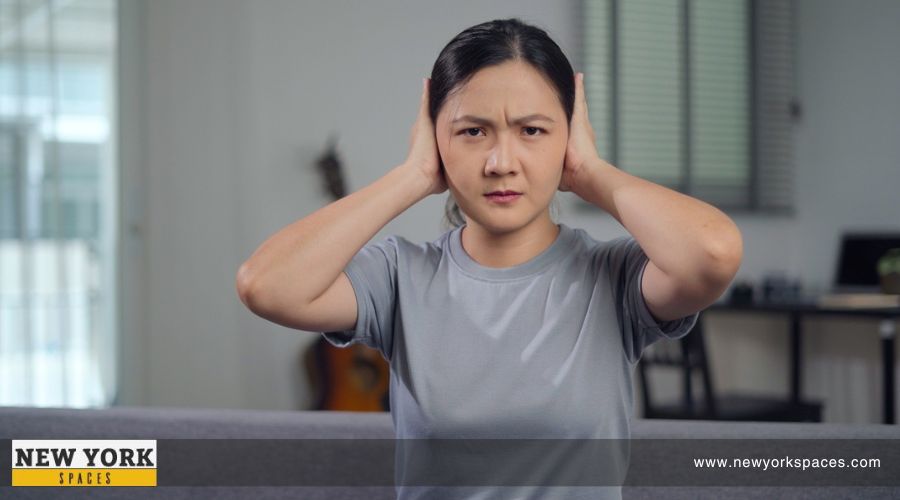In our increasingly bustling world, where the cacophony of urban environments, digital notifications, and the hum of everyday machinery is ever-present, finding solace amidst the noise has become a paramount challenge for many. This blog post explores the multifaceted strategies people employ to mitigate and manage noise, fostering environments conducive to wellbeing, productivity, and tranquility.
Understanding Noise
In our exploration of how individuals navigate the pervasive presence of noise in their lives, it’s essential to first unpack the concept of noise itself. Noise, in its simplest definition, refers to any sound that is not desired or that interferes with one’s activities or well-being. However, this seemingly straightforward definition belies the complex, subjective nature of how noise is perceived and experienced by different people.
The Subjectivity of Noise Perception
The perception of noise is deeply subjective, influenced by a myriad of factors including personal preferences, cultural backgrounds, psychological states, and even the context in which a sound occurs. For instance, the sound of bustling city streets may be music to the ears of someone who thrives in vibrant urban environments, yet it could be overwhelmingly stressful to someone who prefers the serene quiet of rural settings.
This subjectivity extends to the very fabric of our daily lives, where sounds ranging from the rhythmic tapping of rain on a window to the jarring honk of traffic can evoke a wide spectrum of emotional and physiological responses. What is considered a soothing, ambient sound to one person can be an intrusive distraction to another, underscoring the deeply personal relationship we have with the soundscape around us.
The Role of Context in Noise Perception
Context plays a crucial role in how sound is interpreted as noise. A sound that might be acceptable or even enjoyable in one setting can become intolerable in another. For example, loud music at a concert is part of the experience and generally welcomed, but the same level of noise during a quiet study session could be considered highly disruptive.
Furthermore, the activities one is engaged in can significantly affect their tolerance to noise. A sound that might be easily ignored while engaging in a highly engaging task could become unbearable when trying to concentrate on a complex or delicate task that requires undivided attention.
Psychological and Physiological Impacts
Understanding noise also involves recognizing its potential psychological and physiological impacts. Chronic exposure to high levels of noise is not merely an annoyance; it can have profound effects on health, including increased stress levels, disturbed sleep patterns, and even long-term hearing damage. The body’s stress response to noise, particularly unexpected or particularly loud noises, can trigger a cascade of reactions designed to alert and protect, but when constantly activated, this can lead to significant health issues.
Cultural and Individual Differences
Cultural and individual differences further compound the perception of noise. Different cultures may have varying tolerances and norms around noise, with some embracing a more bustling, lively soundscape and others valuing quietude and serenity. On an individual level, factors such as age, personality, and even past experiences with sound can shape one’s noise sensitivity and coping strategies.
Hence, the concept of noise is far from uniform; it’s a fluid, subjective experience that varies widely from person to person and context to context. This understanding is crucial as we delve into the ways individuals cope with noise, as it highlights the need for personalized, context-aware strategies in managing the auditory challenges of our environments. Recognizing the nuanced nature of noise perception paves the way for more empathetic, effective approaches to creating spaces and lifestyles that accommodate diverse auditory sensitivities and preferences.
Strategies for Dealing with Noise
1. Physical Barriers
In the quest to find tranquility amidst the cacophony of daily life, creating physical barriers against noise stands out as a primary strategy. This approach involves fortifying one’s immediate environment to either block out or significantly reduce the intrusion of unwanted sounds. Let’s delve deeper into the various facets of this strategy, exploring both its potential benefits and considerations.
Soundproofing Windows and Doors
Windows and doors are often the weakest links in a building’s defense against noise. Upgrading to soundproof versions can dramatically decrease the penetration of external noise. Soundproof windows often feature double or triple glazing, with layers of air or inert gas between the panes, effectively dampening sound waves. Similarly, soundproof doors are constructed with dense, mass-loaded materials and seals around the edges to prevent sound leaks. While the installation of such specialized fixtures can be an investment, the payoff in terms of peace and quiet can be substantial, particularly for those living in high-noise areas like city centers or near transportation hubs.
Insulating Curtains, Rugs, and Wall Panels
Not all soundproofing solutions require structural alterations. Insulating curtains, for example, offer a more accessible option. Made from thick, dense fabrics, these curtains can absorb sound waves, reducing the echo and reverberation within a room. They are particularly effective against high-frequency sounds like the human voice or the shrill of traffic.
- Rugs and Carpets: Rugs and carpets serve a similar purpose for floor surfaces, especially in spaces with hardwood or tile floors that can amplify noise. The soft fibers of rugs help absorb sound vibrations, making a room not only quieter but also more acoustically pleasant.
- Wall panels: Wall panels, on the other hand, can be both a decorative and functional element in a room. Available in various materials, including foam, fabric, and wood, these panels can significantly reduce sound transmission through walls, particularly in shared or partitioned spaces. Some are designed for easy installation, allowing for a customizable approach to soundproofing that can be adapted to the specific needs and aesthetics of a space.
Considerations and Challenges
While physical barriers offer an effective means of combating noise, several considerations should be taken into account. The cost is a significant factor, as high-quality soundproofing materials and installations can be expensive. It’s essential to balance the need for quiet with budget constraints, possibly prioritizing areas where noise reduction is most needed.
Moreover, structural modifications might not always be feasible, especially for renters or those in historical buildings where alterations are restricted. In such cases, temporary or less invasive solutions like curtains and rugs can provide a degree of relief without the need for permanent changes.
2. Technological Solutions
The integration of technology in combating noise pollution has brought about innovative solutions that offer immediate relief in noisy environments. Among these, noise-cancelling headphones stand out as a popular choice for many. These sophisticated devices employ active noise control technology, which involves the creation of sound waves that are the exact inverse of the ambient noise, effectively cancelling it out. This technology allows users to immerse themselves in a cocoon of silence, even amidst the bustling chaos of urban life or the constant drone of machinery, making them invaluable for concentration and peace in various settings.
Beyond headphones, the use of white noise machines and apps represents another technological stride in managing noise. These devices generate a consistent, ambient sound, such as rainfall, ocean waves, or simple static, which can mask more jarring environmental noises. The steady, predictable nature of white noise helps to create a calming atmosphere conducive to focus and relaxation. It’s particularly beneficial in environments where controlling external noise is not possible, offering a portable and convenient solution to improve sleep quality and enhance concentration.
3. Nature’s Solace
Nature’s embrace offers a profound sanctuary from the relentless din of urban and technological clamor, serving as a vital counterbalance to our often-hectic lifestyles. The therapeutic essence of natural environments and sounds lies in their inherent ability to transport us to a state of calm and renewal, far removed from the cacophony of modern life.
- The Therapeutic Effects of Natural Sounds: The gentle symphony of nature, from the soothing rustle of leaves stirred by a gentle breeze to the rhythmic lapping of waves against the shore, possesses an intrinsic calming effect. Birdsong, in particular, embodies a sense of serenity and joy, with its varied melodies providing a stark, refreshing contrast to the monotonous and sometimes jarring sounds of urban environments. These natural acoustics have been scientifically demonstrated to lower stress hormones, ease mental fatigue, and foster a sense of inner peace.
- The Restorative Power of Green Spaces: Urban parks and gardens serve as vital green lungs within the concrete jungle, offering not just a visual respite but also an auditory oasis. The presence of greenery and water features can significantly diminish the perception of noise, creating a buffer that softens the impact of urban soundscapes. Engaging with these spaces, whether through leisurely walks, meditation, or simply sitting and absorbing the surroundings, can help recalibrate our mental and emotional state, enhancing overall well-being.
- The Tranquility of Water Bodies: Water, in its myriad forms, from the vast expanse of the ocean to the gentle flow of a stream, brings with it a profound sense of tranquility. The sound of water is universally recognized for its soothing qualities, with the rhythmic patterns of waves and flowing streams providing a meditative backdrop that can aid in mental de-cluttering and relaxation. The act of being near water, whether sitting by a lakeside or walking along a beach, can be a powerful antidote to noise pollution, offering a sensory experience that is both grounding and uplifting.
- Integrating Nature into Daily Life: Incorporating elements of nature into our daily routines can be a simple yet effective way to counteract noise pollution. Even in urban settings, seeking out green spaces, maintaining indoor plants, or using natural soundscapes through recordings or apps can provide a touch of nature’s solace. These practices underscore the importance of creating opportunities for engagement with the natural world, fostering environments that support our health and happiness.
Mindfulness and Meditation
Mindfulness and meditation emerge as powerful, introspective strategies in the quest to navigate the often overwhelming noise of our external environments. These practices invite a shift from attempting to control the uncontrollable—external noise—to mastering one’s internal response to it. This internal alchemy not only alters our relationship with noise but also enhances our overall resilience and mental clarity.
Cultivating Mindfulness
Mindfulness, at its core, is the practice of being fully present and engaged with the current moment, without judgment or distraction. By fostering mindfulness, individuals learn to observe their surroundings, including noise, without attaching to or being disturbed by them. This perspective transforms noise from a focal point of irritation to just another element in the vast tapestry of sensory experiences. Regular mindfulness practice, such as mindful breathing, walking, or even eating, can train the mind to maintain tranquility and focus, regardless of the auditory chaos that may prevail.
The Practice of Meditation
Meditation, while often intertwined with mindfulness, involves specific techniques to achieve a state of deep peace and heightened awareness. Focusing on the breath, for instance, serves as a powerful anchor, drawing attention away from noise and into a space of inner silence. Body scan meditations, where attention is methodically moved through different parts of the body, can similarly redirect focus from external sounds to internal sensations, fostering a profound sense of relaxation and detachment from external disturbances.
The Role of Meditation in Noise Management
In environments where noise is incessant and unavoidable, meditation can offer a sanctuary within. It equips individuals with the ability to enter a state of calm and concentration at will, effectively creating a mental barrier against noise. This skill is particularly valuable in high-stress or high-noise settings, where external quietude is not an option. The beauty of meditation lies in its accessibility; it requires no special equipment or environment, making it an ideal tool for managing noise in any setting.
Integrating Mindfulness and Meditation into Daily Life
Incorporating mindfulness and meditation into daily routines does not necessarily require extensive time commitments or formal training. Even short, regular sessions can yield significant benefits, enhancing one’s ability to remain centered amidst noise. Furthermore, the practice can extend beyond designated meditation times, infusing moments of mindfulness throughout the day—transforming mundane activities into opportunities for presence and peace.
Community and Legal Action
When individual efforts to mitigate noise prove insufficient, turning to collective community action and leveraging legal frameworks can offer effective pathways to address and manage noise pollution. This communal approach not only amplifies individual voices but also fosters a sense of solidarity and shared purpose in tackling common challenges.
The Power of Community Action
Community action against noise pollution begins with the shared recognition of a problem that affects the well-being and quality of life of a group of people. By organizing with neighbors or local interest groups, individuals can pool resources, share experiences, and strategize on the most effective ways to address the issue. This might involve community meetings to discuss the impact of noise and potential solutions, forming action committees, or engaging with local media to raise awareness.
Leveraging Legal Regulations
Many jurisdictions have established legal standards and regulations to control noise pollution, setting limits on acceptable noise levels, times when certain noises are permissible, and procedures for addressing violations. Familiarizing oneself with these regulations is a critical step in taking informed action. Local environmental protection agencies, city councils, or legal advisors can provide guidance on the specific laws applicable to a particular area.
Advocacy for Policy Change
In situations where existing laws and regulations are insufficient to address the noise pollution experienced, communities can band together to advocate for policy changes. This can involve petitioning for the introduction of stricter noise control measures, the establishment of quiet zones, or the enhancement of enforcement mechanisms. Engaging with policymakers, participating in public consultations, and contributing to the drafting of new legislation are ways in which communities can influence the legal landscape surrounding noise pollution.
Personal Lifestyle Adjustments
Navigating the pervasive challenge of noise often requires not just reactive strategies but proactive lifestyle adjustments that place individuals in greater harmony with their auditory environment. These adjustments can range from simple daily choices to more significant life changes, all aimed at reducing the impact of noise on one’s well-being.
- Adjusting Daily Routines: One of the more accessible ways to mitigate noise exposure is to adjust one’s daily schedule to sidestep peak noisy periods. For instance, individuals living near busy roads or construction sites might choose to perform tasks requiring concentration or relaxation during early morning or late evening hours when traffic and activities subside. Similarly, exercising or engaging in outdoor activities in parks or green spaces during less busy times can provide a double benefit of physical activity and noise relief.
- Selecting Quieter Routes and Spaces: Even within the confines of a bustling city, there are pockets of tranquility to be found. Opting for quieter streets, using sound-reducing earplugs during commutes, or seeking out cafes and public spaces known for their calmer ambiance can significantly reduce daily noise exposure. This approach extends to leisure and social activities as well, where choosing venues and events that prioritize a quieter atmosphere can enhance enjoyment and reduce stress.
- Home Environment Adjustments: The home environment offers ample opportunity for noise reduction through strategic adjustments. This can involve simple changes like rearranging furniture to create buffer zones away from external noise sources, using bookshelves filled with books as sound absorbers, or incorporating indoor water features that generate soothing sounds to mask external noise. For those sensitive to noise at night, investing in a high-quality pair of earplugs or a white noise machine can significantly improve sleep quality.
- Significant Lifestyle Changes: For some, the quest for a quieter life may necessitate more substantial changes. Relocating to a quieter neighborhood or even a different city or region known for its peaceful environment could be a life-altering decision driven by the desire for noise relief. Such a move, while significant, can offer profound benefits in terms of mental health, quality of life, and overall well-being.
- Embracing Flexibility and Remote Work: The rise of remote work has opened new possibilities for managing noise exposure. Those with the flexibility to work remotely can choose their work environment, allowing for control over noise levels during work hours. This could mean working from a quiet home office, a serene public library, or even retreating to a countryside location for focused work periods.
Building a Supportive Community
Building a supportive community is pivotal in creating a harmonious environment where noise is managed through collective effort and mutual respect. This process begins with open dialogue among community members—be it family, roommates, or neighbors—about noise concerns and preferences. Establishing agreed-upon quiet hours, especially during early mornings and late evenings, can ensure that everyone’s need for peace is respected. Designating specific areas for activities that generate more noise, such as entertainment rooms or communal spaces for social gatherings, can help contain and control noise levels. Regular meetings or communication channels can facilitate ongoing dialogue, allowing for adjustments as community members’ needs and circumstances evolve. Through these concerted efforts, a culture of empathy and cooperation is nurtured, making the community more resilient to noise challenges and enhancing the quality of life for all involved.
Conclusion
In conclusion, dealing with noise in our modern world requires a multifaceted approach, blending physical, technological, natural, psychological, communal, and legal strategies. The key lies in understanding one’s personal relationship with noise and exploring a combination of methods to create a balanced and peaceful environment. As we continue to navigate the challenges of a noisy world, these strategies offer a roadmap towards achieving serenity amidst the sound.





